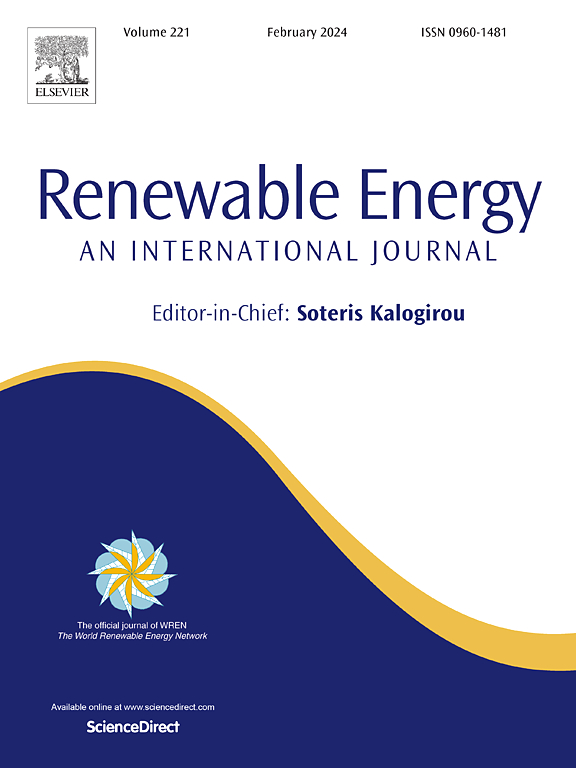Study on the matching characteristics between office building energy consumption and rooftop photovoltaics in regions with hot summers and cold winters
IF 9
1区 工程技术
Q1 ENERGY & FUELS
引用次数: 0
Abstract
Building energy consumption constitutes a substantial proportion of global energy usage. Building-integrated photovoltaic (BIPV) has emerged as a pivotal technology for energy conservation and emission reduction in office buildings. However, the climatic complexity in regions characterized by hot summers and cold winters presents significant challenges to the efficient deployment of BIPV systems. Moreover, the analysis of climate adaptation between PV generation and building energy consumption remains inadequate. To investigate the influence of climatic conditions on the “generation-consumption” matching relationship in such regions, this study focuses on an office building in Wenzhou as a case study, monitoring annual meteorological and building energy consumption data. A computational model of a BIPV rooftop system was developed, streamlining the climate adaptation analysis method. Using the Energy Matching Rate (EMR), the study analyzed the seasonal characteristics in the matching performance of the PV rooftop. The simulation results indicate that the installation of PV rooftops on conventional buildings leads to an increase in annual heating energy consumption and duration, while reducing cooling energy consumption and duration. Notably, the changes in energy consumption are more pronounced in summer and winter, whereas the variations in duration are particularly significant in spring and autumn. Significant seasonal differences are observed in the matching between building energy consumption and PV power generation, with higher matching rates in spring and summer and lower rates in autumn and winter. Furthermore, matching rate fluctuations are larger in spring and autumn, while summer and winter are relatively stable. By utilizing PV power generation during non-operational periods, the matching rate can be increased by 37.42 % in spring, 21.91 % in summer, 21.46 % in autumn, and 13.87 % in winter.

夏热冬冷地区办公建筑能耗与屋顶光伏匹配特征研究
建筑能源消耗占全球能源消耗的很大比例。建筑一体化光伏(BIPV)已成为办公建筑节能减排的关键技术。然而,在夏季炎热、冬季寒冷的地区,气候的复杂性对BIPV系统的有效部署提出了重大挑战。此外,光伏发电与建筑能耗之间的气候适应性分析仍然不足。为探讨气候条件对此类地区“产-耗”匹配关系的影响,本研究以温州市某写字楼为例,监测年度气象和建筑能耗数据。建立了BIPV屋顶系统的计算模型,简化了气候适应分析方法。利用能量匹配率(EMR)分析了屋顶光伏匹配性能的季节特征。仿真结果表明,在传统建筑上安装光伏屋顶,增加了采暖能耗和持续时间,减少了制冷能耗和持续时间。值得注意的是,能源消耗的变化在夏季和冬季更为明显,而持续时间的变化在春季和秋季尤为显著。建筑能耗与光伏发电匹配具有明显的季节差异,春夏季匹配率较高,秋冬季匹配率较低。此外,春季和秋季匹配率波动较大,而夏季和冬季相对稳定。利用非运行期光伏发电,可分别提高春季37.42%、夏季21.91%、秋季21.46%和冬季13.87%的匹配率。
本文章由计算机程序翻译,如有差异,请以英文原文为准。
求助全文
约1分钟内获得全文
求助全文
来源期刊

Renewable Energy
工程技术-能源与燃料
CiteScore
18.40
自引率
9.20%
发文量
1955
审稿时长
6.6 months
期刊介绍:
Renewable Energy journal is dedicated to advancing knowledge and disseminating insights on various topics and technologies within renewable energy systems and components. Our mission is to support researchers, engineers, economists, manufacturers, NGOs, associations, and societies in staying updated on new developments in their respective fields and applying alternative energy solutions to current practices.
As an international, multidisciplinary journal in renewable energy engineering and research, we strive to be a premier peer-reviewed platform and a trusted source of original research and reviews in the field of renewable energy. Join us in our endeavor to drive innovation and progress in sustainable energy solutions.
 求助内容:
求助内容: 应助结果提醒方式:
应助结果提醒方式:


